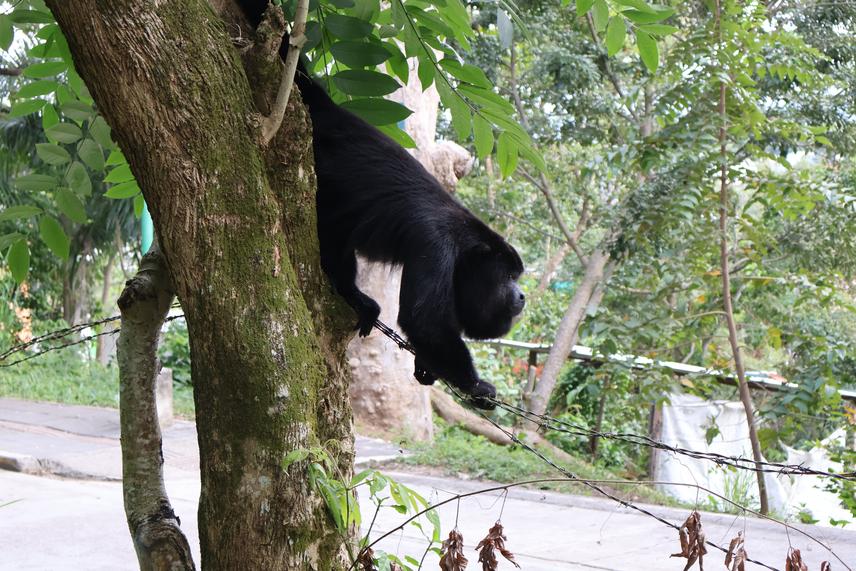Mónica M Maravert Solano
Tropical regions harbour a great wealth of species, but rapid urban expansion poses an increasing threat to their biodiversity. This process leads to habitat fragmentation and loss, a rise in human–wildlife conflicts, and greater risks of disease transmission among humans, domestic animals, and wildlife. Tropical areas are considered particularly vulnerable, registering some of the most significant biodiversity losses associated with urbanisation.

Black howler monkey waiting for food provisioning. © Mónica Maravert.
Among the species most sensitive to these changes is the black howler monkey (Alouatta pigra), a tropical primate that depends on tree cover, which provides food, shelter, and safe travel routes. Its folivorous–frugivorous diet requires constant access to a diversity of tree species, making it especially vulnerable to habitat fragmentation. Currently, the black howler monkey is classified as Critically Endangered by the IUCN and as Endangered under NOM-059-SEMARNAT-2010.
This project aims to generate useful information for the conservation of the black howler monkey in urban contexts, promoting collaborative actions with local stakeholders and fostering participatory processes in education, environmental health, and citizen science. The study takes place in Palenque, Chiapas, a city that retains important remnants of tropical forest, with high biological and cultural diversity, and a notable influx of tourism that increases interactions between humans and wildlife.
Through behavioural observations of four groups of monkeys that use different areas of the city, combined with spatial analyses, we will assess their diet, behaviour, and daily space use, identifying critical areas and the impacts of human activities.
Additionally, from a One Health perspective, we will evaluate the prevalence of endoparasites in black howler monkeys, humans, and domestic animals to understand health risks associated with coexistence in urban environments.
The project also promotes community engagement through conservation workshops, artistic activities, and environmental education, encouraging knowledge ownership and collaboration in protecting this species. By integrating ecological, social, and public health dimensions, the project aims to generate a replicable model of participatory urban conservation that fosters coexistence between black howler monkeys and the local communities of Palenque.
Header: Black howler monkey using electrical wiring for movement. © Mónica Maravert.